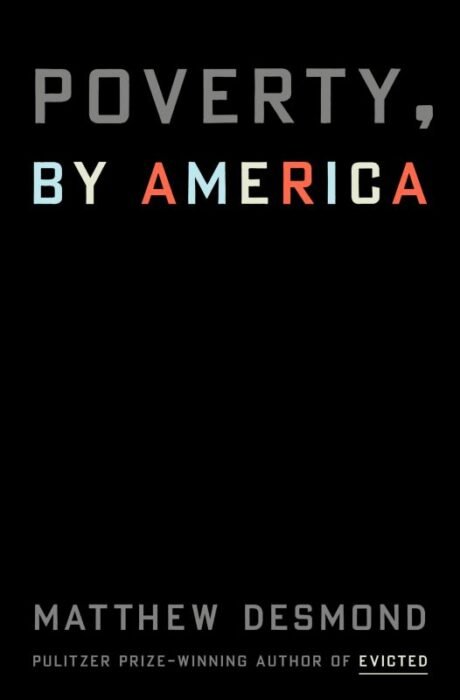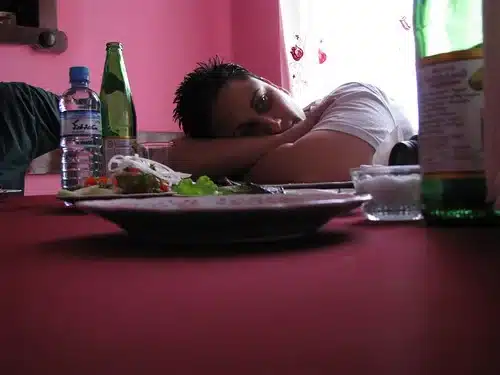Please scroll down for an English review.
הספר Poverty, by America אינו ספר קל לקריאה. זוהי תמונת מציאות עגומה וקשה של חיי 38 מליון עניים בארה"ב. אחד מכל תשעה מבוגרים , ואחד מבין שמונה ילדים יוגדר כעני. הסופר מתאר את הגורמים שמובילים ליצירת עוני, לשימור אי השיוויון והעוני, והוא מציע דרכים לצמצם את התופעה עד מיגורה.
בקליפת אגוז, הסופר טוען שעוני משגשג ופורח בחברה שמעוניינת לשמר ולהנציח את העוני. לכן, למרות שהיקף התמיכות הממשלתיות בעניים בין תקופת רייגן לתקופת טראמפ גדל משמעותית, העוני עצמו לא הצטמצם.
הסופר מצביע על התופעות המרכזיות שמובילות לשימור אי השיוויון והעוני: הגורם המשפיע ביותר הוא החלשות מעמד העובדים והמעבר להעסקה בשיטות העסקה לפי חוזים, מה שמאפשר למעסיקים ניצול של כח עבודה זול, בשכר מינימום, שאינו מאפשר קיום בכבוד.
גורמים אחרים הם העדר אחריות והעדר ערבות חברתית. החברה אינה מספקת לעניים פתרונות ואינה לוקחת אחריות על האופן שבו היא מנצלת את העניים. אחת הדוגמאות המטרידות ביותר מתייחסת להעדר נכונות לשלב עניים בשכונות מבוססות ויצירת גבולות בלתי נראים בין האוכלוסייה המבוססת כלכלית לאוכלוסייה ענייה.
החברה מסבכת את העניים ברשת מוסדות שאינם מסייעים להם לצאת ממצבם, נהפוך הוא גורמת להם לשקוע יותר לתוך מצבם מבלי לאפשר להם או לילדהם עתיד טוב יותר וזו אחת הבעיות הקשות ביותר, יצירת דור שני ושלישי לעוני.
גם המדיניות הממשלתית והתאגידים תורמים לקיבוע אי השיוויון והעוני ע"י סיבסוד העשירים, הקצאת תקציבים משמעותיים והרבה יותר גדולים לשכבות חברתיות שחזקות כלכלית ואי טיפול במיסוי בעלי ההון (לדוגמא אי טיפול במקלטי מס לעשירים ומילארדרים). העשירים בתורם נסוגים לבועות ההון שלהם ומייבשים את המרחב הציבורי. הימנעות הבנקים מהקמת סניפים בשכונות מוחלשות ואפלייה במימון והלוואות לעניים תוך גביית עמלות מופקעות תורמות להנצחת העוני.
הסופר קורא תיגר על התפיסה הנפוצה של עוני. עוני, הוא לא רק העדר כסף. הוא לא בחירה מודעת או עצלות. עוני הוא תוצר של ניצול מחפיר. הוא מצב מתמיד של פחד, בושה, ואיפוק שמדרדרים את איכות חייו של הפרט ולא מאפשרים לו לצאת מהמעגל, כך שהשורה התחתונה בחשבון הבנק היא הדבר שהכי פחות מדאיג את העני.
בחלק האחרון של הספר הוא קורא להחלת מגוון פתרונות ובינהם טיפול במיסויי ההון, העלאת שכר המינימום ואפשרויות ההתאגדות של עובדים, השקעה בדיור בר השגה וסגירת מקלטי המס. הוא גם מציע לבטל את ההפרדה בין שכונות של העשירים לעניים ולאפשר לעניים לגור באותן השכונות ולבצע אינטגרציה משמעותית בבית הספר. כך, הדבר יסייע לילדי העניים לצאת ממעגל העוני ולשפר את חייהם ובכך לצמצם את מימדיי העוני ע"י הקניית הזדמנויות שוות לחינוך, השכלה ובריאות וקטיעת מעגל העוני.
בשורה התחתונה, מדובר בספר מעניין מאוד, שכולל טיעונים מנומקים ובזווית ראייה מפוקחת. הסופר מקפיד לתת דוגמאות ספציפיות לטענות שהוא מעלה ולהסתמך על מחקרים. מאוד התחברתי לטענה שלו שמיגור העוני הוא בחירה חברתית מודעת שבבסיסה הוגנות ומתן הזדמנויות שוות. אבל אני גם חושבת שהטיעון הזה נראה יפה מאוד על הנייר, אבל קשה מאוד ליישום.
לטעמי, היה חסר בספר דיון מעמיק בהשפעות וההשלכות של אכיפה בררנית שמפעילות רשויות החוק ובתי משפט כנגד אוכלוסיות מוחלשות. הוא מציג את ההיבט של אכיפה בררנית בתחום הדיור, אבל לא כתמונה הוליסטית עד כמה היא פוגעת ומונעת את היציאה ממעגל העוני.
Poverty, by America/ Matthew Desmond
Kindle Edition, 287 pages, 2023
דירוג SIVI –
איכות אודיו –

The book Poverty by America is a challenging yet urgent read. It vividly portrays the grim and intricate lives of 38 million impoverished individuals in the US. With one out of nine adults and one out of eight children living in inadequate conditions, the author delves into the factors perpetuating poverty and inequality. He also offers solutions, emphasizing the need for immediate action to reduce and eventually eradicate this social phenomenon.
The author claims that poverty thrives and flourishes in a society that wishes to preserve and perpetuate poverty. Therefore, although the scope of government support for people experiencing poverty between the Reagan and Trump eras increased significantly, poverty did not decrease.
The writer points to the main phenomena that lead to the preservation of inequality and poverty: the most influential factor is the weakening of workers' status and the transition to employment using contract employment methods. These methods allow employers to exploit a cheap labor force at a minimum wage, which does not allow for a dignified existence.
Other factors are the lack of responsibility and social guarantees. The society does not provide the poor with solutions or take responsibility for how it exploits them. One of the most disturbing examples is the lack of willingness to integrate the poor into established neighborhoods and the creation of invisible boundaries between the economically established population and the poor population.
Society entangles the poor in a network of institutions that do not help them get out of their situation; on the contrary, it causes them to sink deeper into their situation without allowing them or their children a better future, and this is one of the most challenging problems, creating a second and third generation in poverty.
The author also critiques government policies and corporate practices perpetuating inequality and poverty. He points out how these entities often prioritize the rich, allocating significant budgets to economically solid strata and allowing tax shelters for the wealthy. This, he argues, leads to the rich retreating into their capital bubbles, further depleting the public space. He also highlights how banks' avoidance of underprivileged neighborhoods and discriminatory lending practices contribute to the perpetuation of poverty.
The author challenges common misconceptions about poverty, arguing that it is not simply a lack of money or a result of laziness or choice. Instead, he asserts that poverty is a product of abject exploitation, which leads to a constant state of fear, shame, and restraint. He argues that this deteriorates the quality of life for impoverished individuals and traps them in a vicious cycle where the state of their bank account is the least of their worries.
In the last part of the book, he calls for applying various solutions, including treatment of capital taxation, raising the minimum wage and unionization options for workers, investing in affordable housing, and closing tax havens. He also proposes abolishing the separation between the rich and poor neighborhoods, allowing the poor to live in the same communities, and carrying out significant integration in the school. Thus, this will help the children of the poor to get out of the cycle of poverty and improve their lives, thereby reducing the dimensions of poverty by providing equal opportunities for education, education, and health and breaking the cycle of poverty.
This compelling book is underpinned by meticulous research and reasoned arguments. The author's controlled point of view and use of specific examples to support his claims instill confidence in the reader. His assertion that eradicating poverty is a conscious social choice based on fairness and equal opportunities resonates, even if the practical implementation of such a vision is challenging.
The book lacked an in-depth discussion of the effects and consequences of selective enforcement by law enforcement and courts against disadvantaged populations. It presents selective enforcement in the field of housing but not a holistic picture of how much it harms and prevents the exit from the cycle of poverty.
לגלות עוד מהאתר Sivi's Books
Subscribe to get the latest posts sent to your email.

